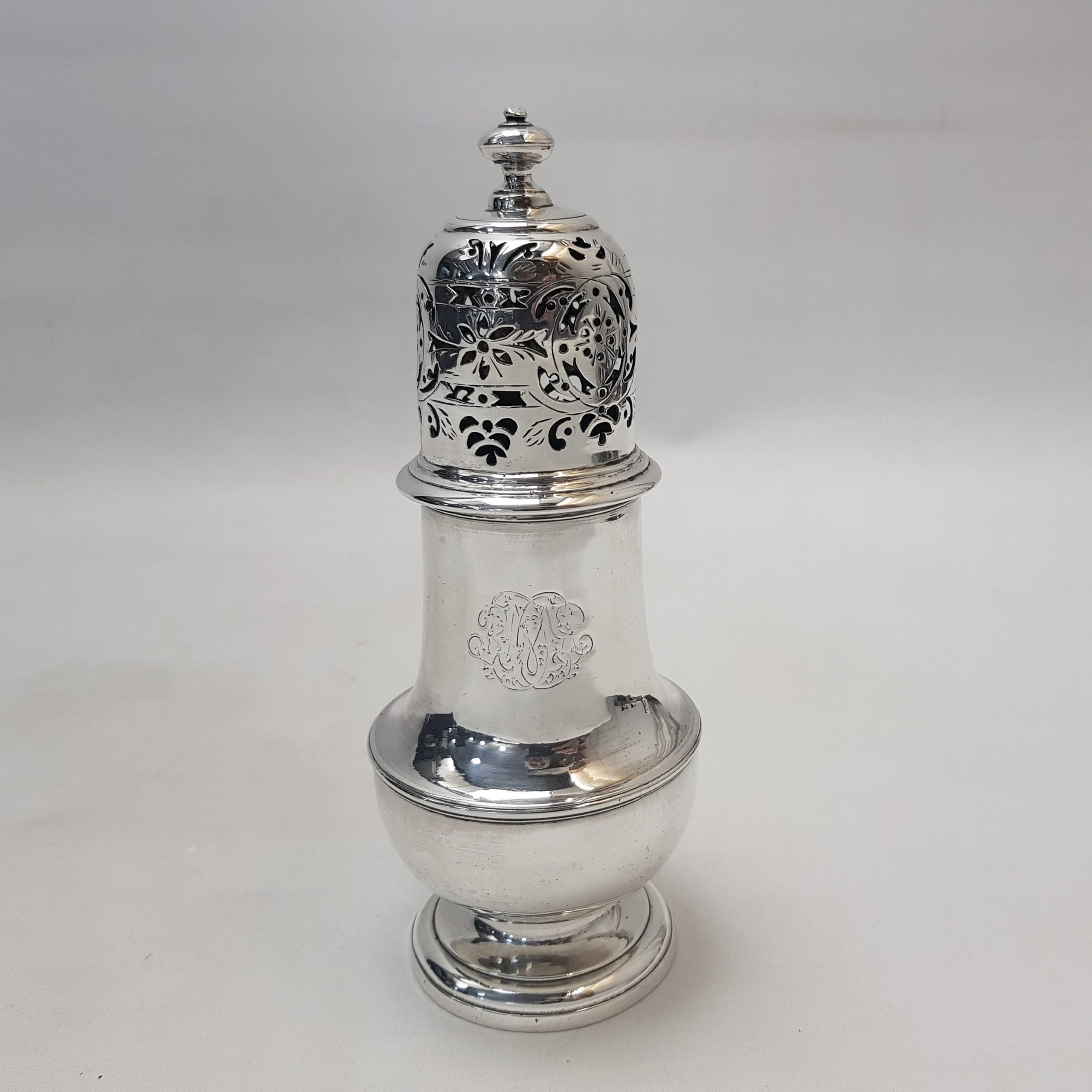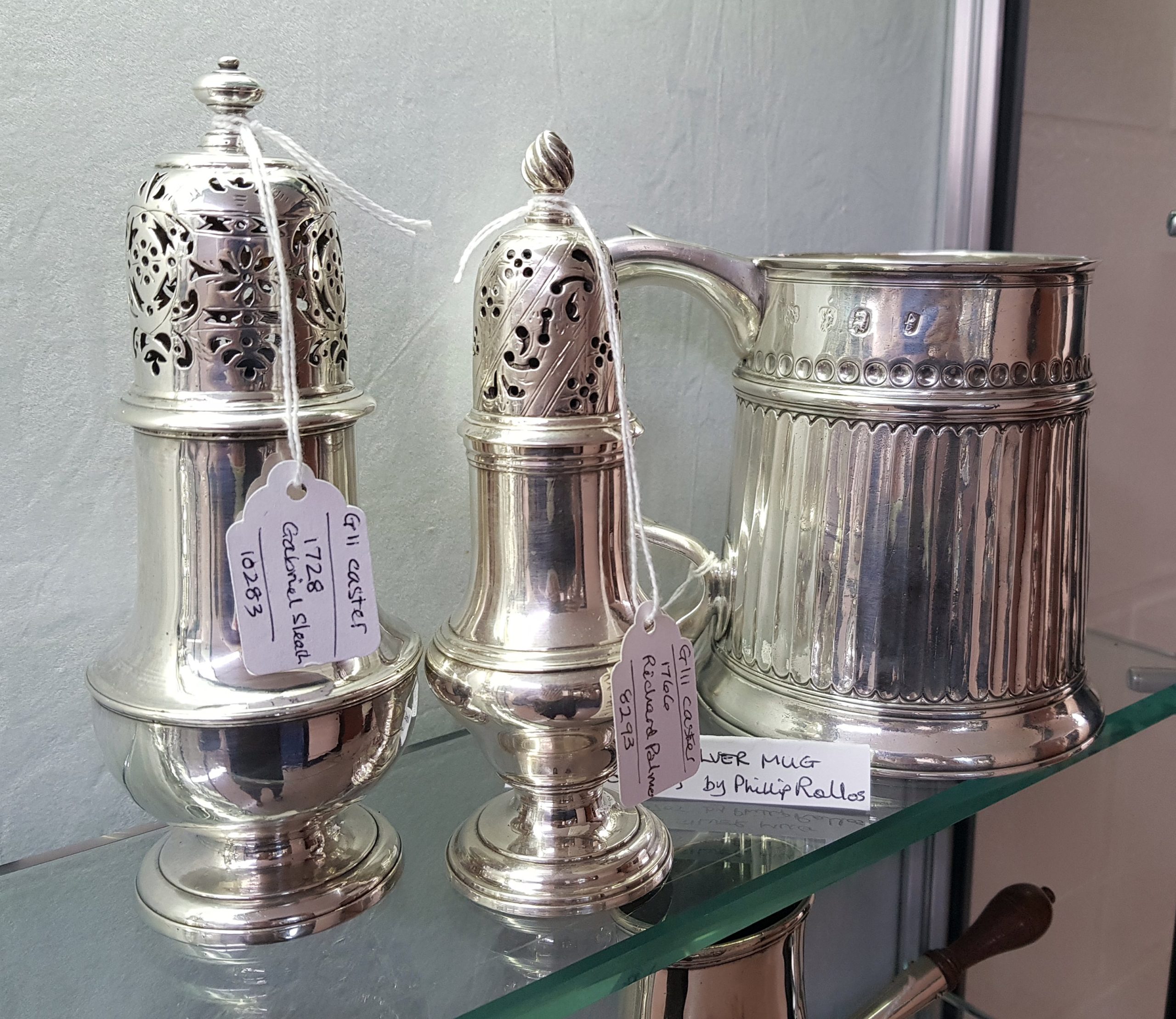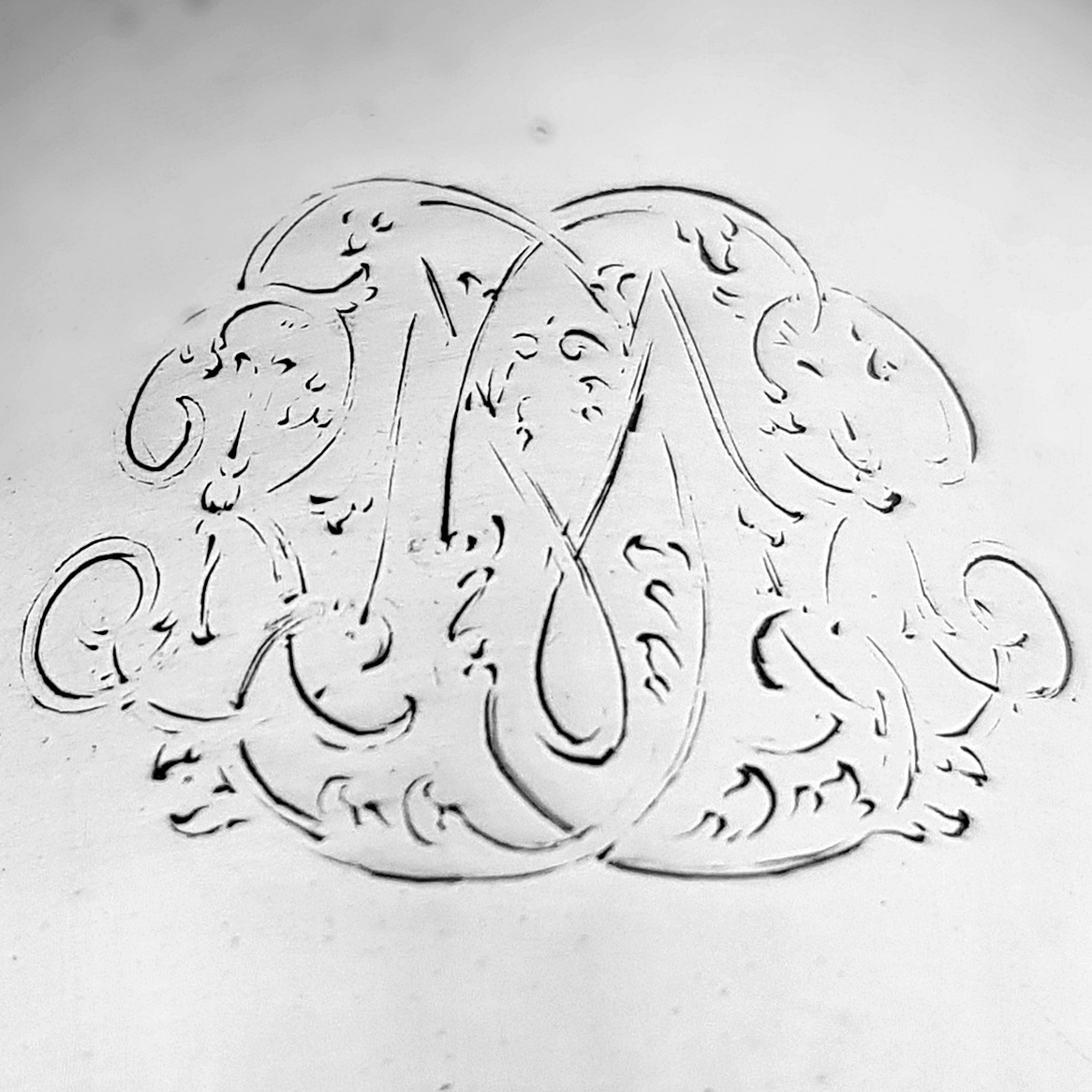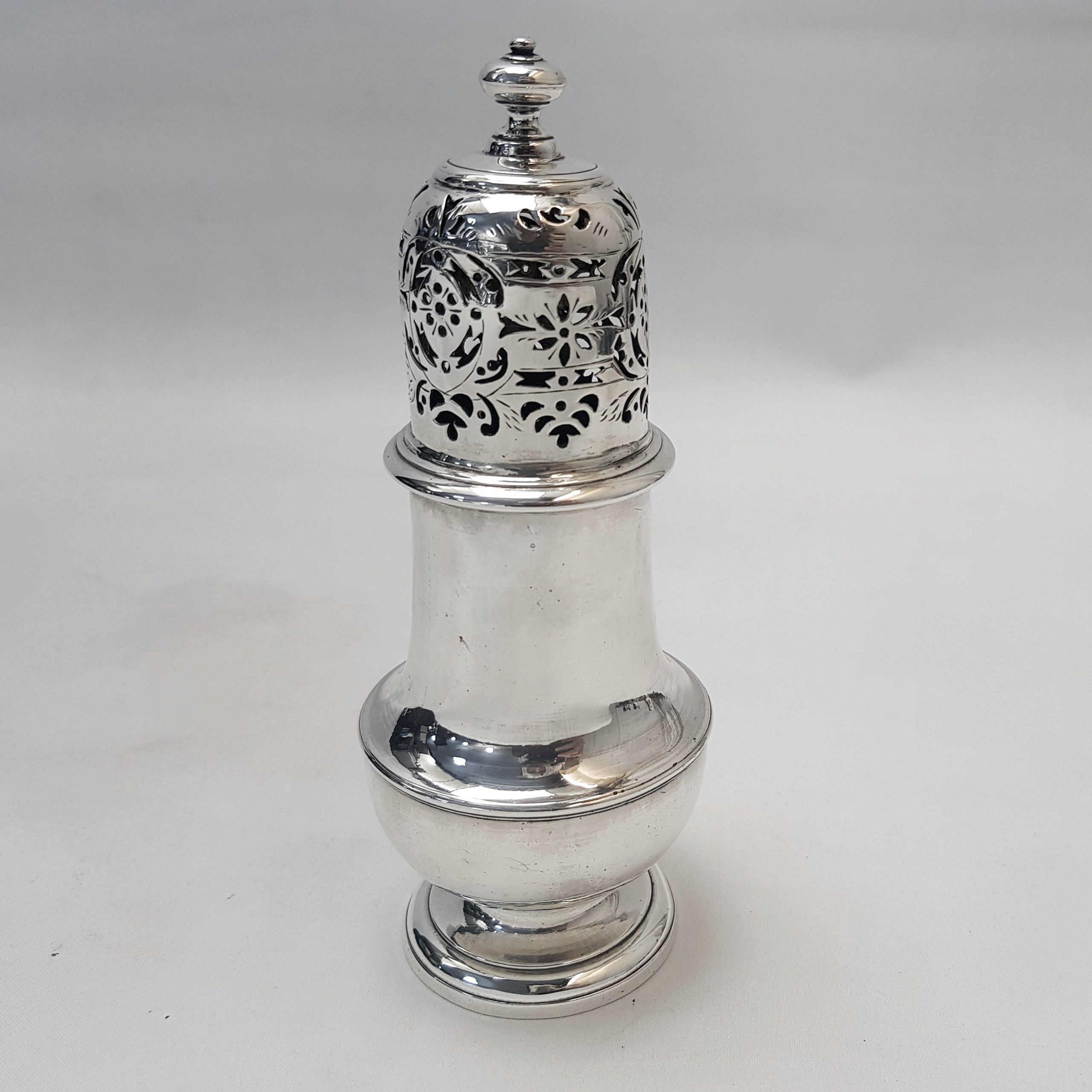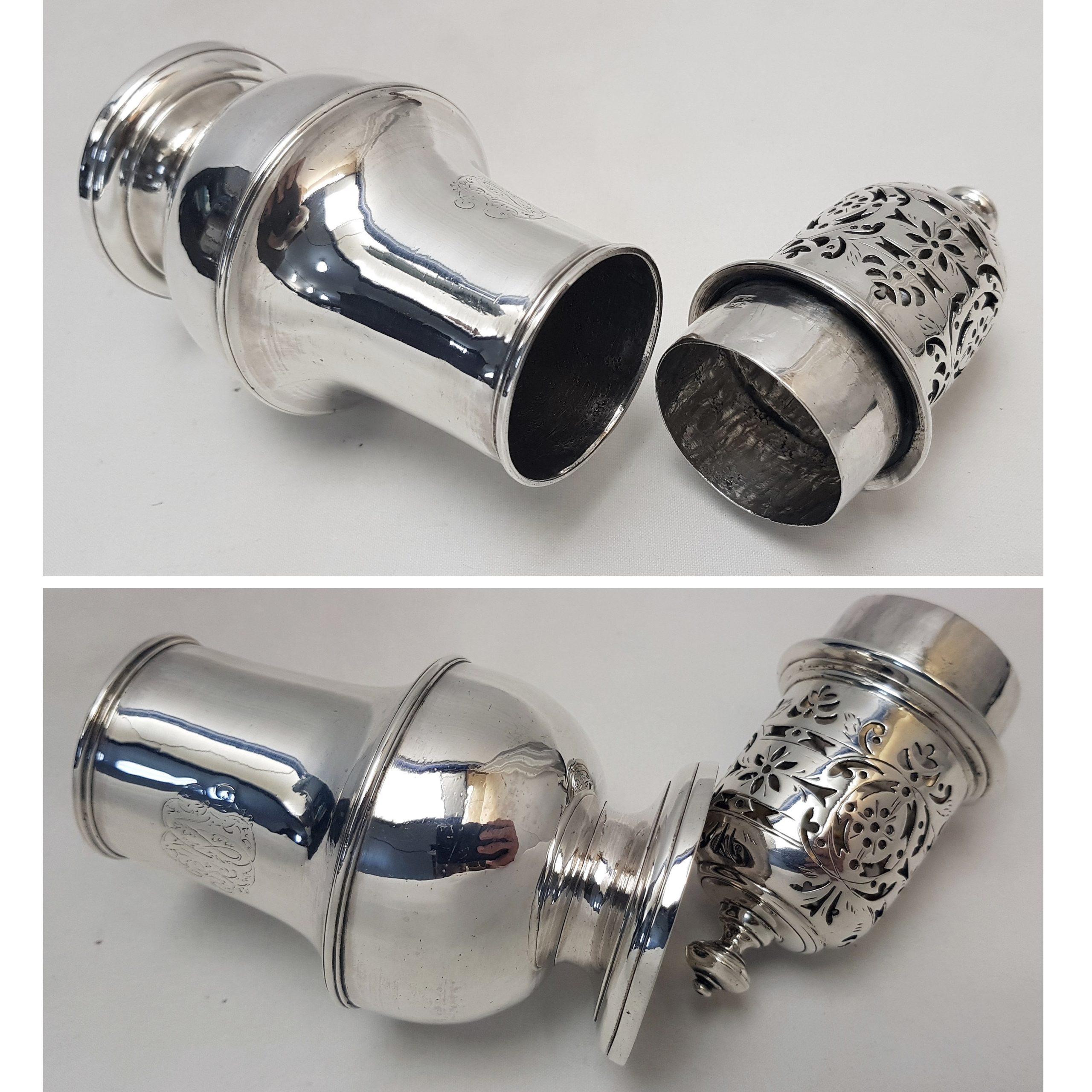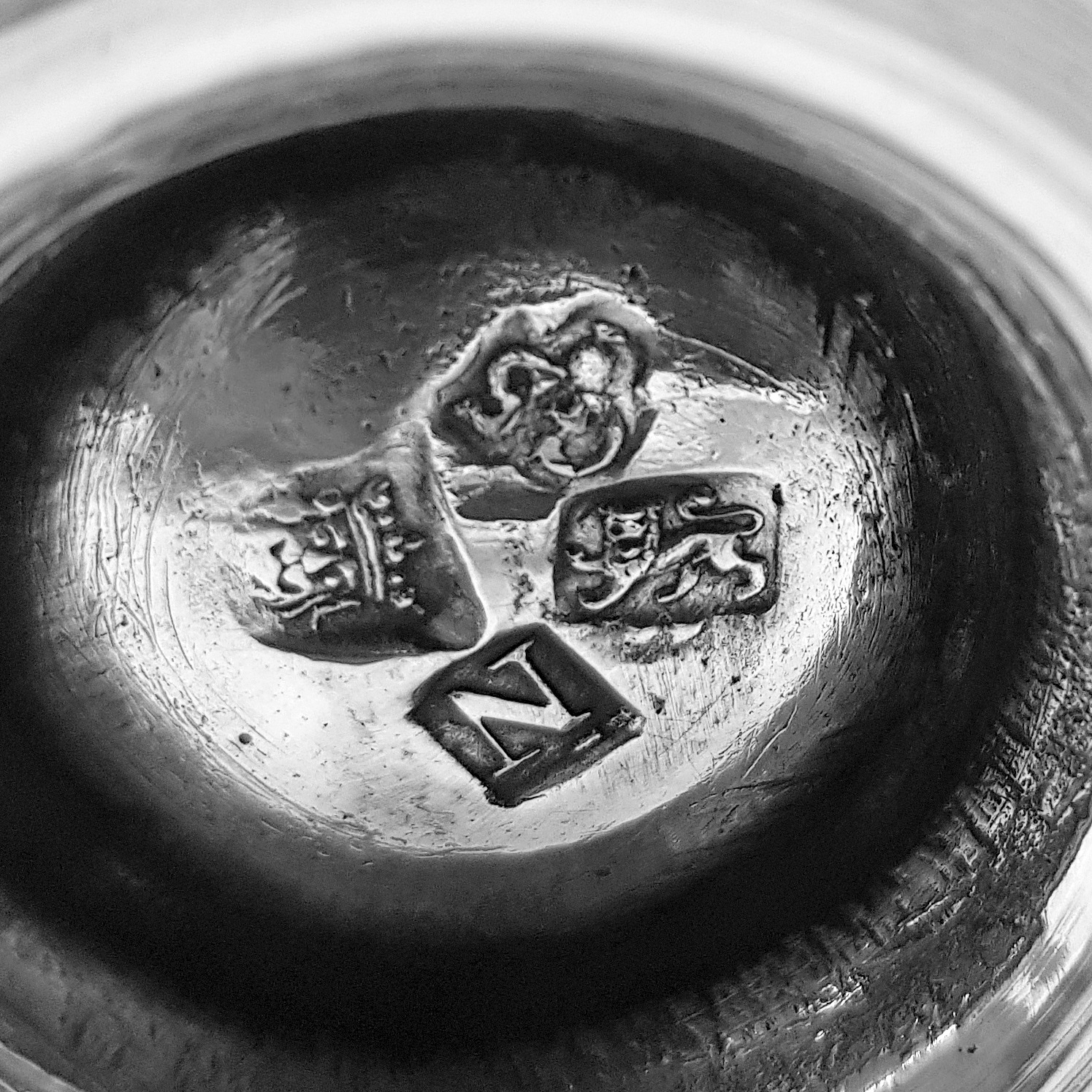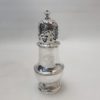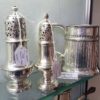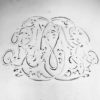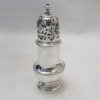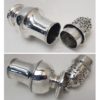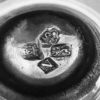George II Antique Silver Caster
SOLD
Stock: 10283
Date: 1728
Maker: Gabriel Sleath
Country: England
An excellent quality antique silver castor with a pierced removable top. Classic plain form. Heavy gauge and chunky style. Hand...
Description
Description
An excellent quality antique silver castor with a pierced removable top. Classic plain form. Heavy gauge and chunky style. Hand engraved to the front is a large cypher.
Total weight 195 grams, 6.2 troy ounces.
Height 16.3cm. Diameter of base 5.2cm.
London 1728.
Maker Gabriel Sleath.
Sterling silver.
18th century.
Marks. Stamped on the underside with a full set of English silver hallmarks, the top with the maker’s and lion mark.
Cyphers. Cyphers are attractive designs of interlaced and reversed letters, fashionable towards the end of the 17th century and beginning of the 18th century. Benjamin Rhodes, a famous goldsmith/engraver of that period (apprenticed to David Venables, goldsmith in 1670, free in 1678) published his “New Book of Cyphers” in 1723 containing a comprehensive set of cypher designs in alphabetical sequence.
Literature. Antique Silver Casters didn’t become common household objects until the late 17th century. They were made in varying sizes and designs and were usually for sugar or pepper although the Blind Caster, the earliest form of mustard pot, was used for dry mustard. The old spelling “castor” is not in frequent use currently and generally speaking, the term “caster” is only used now for sugar. During the 18th century, casters were often produced in sets of three for sugar and two types of pepper. As granulated sugar is a more modern development, the early Sugar Castors had larger holes necessary for crushed sugar. Sugar casters are also referred to as “muffineers”.
Condition
The caster is in very good condition with no issue. Minor wear commensurate with age. The engraved cypher has a little wear.
Maker Information
Maker: Gabriel Sleath
Gabriel Sleath (1674 - 1756), London goldsmith, apprenticed to Thomas Cooper 1691, free 1701. Thomas appears to have worked for Isaac Dighton for some time before he entered his first mark in 1707. An outspoken critic of Huguenot goldsmiths working in England he signed the petitions in 1711 and 1716. Livery 1712. 2nd (sterling) mark 1720. 3rd mark 1739. 4th mark, in partnership with Francis Crump his former apprentice, 1753. Sleath's output includes an extensive production of hollow wares such as coffee pots, tankards, cups and covers. His major works include the wine cisterns in the Hermitage Museum, St Petersburg, and that of the Grocers Company.
Our Guarantee
Customer satisfaction is our primary concern
All silverware on our website is checked thoroughly prior to offering it for sale and every product listing contains a condition report and details of the silver hallmarks.
All items offered on our website include:
- Free Shipping Worldwide
- Tracked and Insured
- 14 day no quibble money back guarantee
- We are accredited members of LAPADA and conform to their strict professional standards
- We dispatch 1-3 days after receiving cleared payments
More detailed information about deliveries, returns and how to pay is available in the Help section at the bottom of this page.
